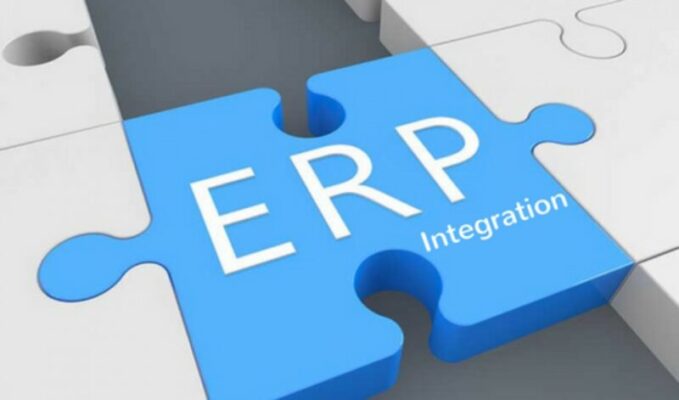Enterprise resource planning (ERP) is a significant contributor to the success of several developing businesses. ERP systems help with streamlining daily business operations, which leads to reaching business goals. Indeed, whether you are managing supply chains or human resources, ERP systems are sure to have your back.
However, data shows that despite the enormous potential of ERP, 60 percent of ERP implementations fall short in one way or another. However, it is not to say that ERP systems are, by default, defective. More accurately, the issue lies in the circumstances surrounding ERP integration and the challenges that companies face in implementing it. By overcoming these challenges, you can help ensure a flawless ERP integration in your enterprise. To help you prep, keep in mind the following common challenges that come along with ERP integration.
Choosing the Right ERP Solution
One of the main concepts you need to understand in finding an ERP solution is that different ERP software caters to different needs. What works for one company will not necessarily work as well for yours. Hence, you must find an ERP program that matches what your business requires.
To achieve this, consider how your business operates and what the company’s goals are. You need to have a firm grasp of the day-to-day processes happening in the back office and pinpoint aspects that ERP can improve. By doing so, you can concretely describe to a systems provider what you are looking for and increase your chances of choosing the most suitable ERP software for your company. Another great option is to contact a company like Sytecg which take a different approach to ERP with the help of its ERP consultants. To learn more on how this may be a better alternative for your business, check out their site https://sytecg.com/.
Integrating Multiple Systems
Before, on-premise ERPs that deal with the internal system of the back office are enough to ensure a smoother working process. With the advancement of technology, however, the demand and the necessity for external systems like mobile platforms and cloud-based applications have increased.
One significant perk of using these systems is remote access, which allows your staff and other relevant parties to access your data center from different locations. In the wake of the COVID-19 pandemic, this is a useful tool that allows you to continue operations despite quarantine limitations.
Bear in mind that there are several challenges in implementing external systems, such as the evolving protocols in their use. Thus, make sure to carefully weigh their pros and cons before integrating multiple systems.
Training Staff in Using Complex Software
Top management often underestimates how complex ERP software is. ERP systems are comprised of different modules, each with its own functions and processes. To maximize its potential, it is vital to train your employees in using it effectively.
Set up a timeline to prepare the departments and their staff accordingly. Ask your systems provider for help in training your staff. Organize workshops and seminars explaining the upcoming ERP software. Aside from training your employees on how to use the new system, make sure to explain to them why it is essential and how it helps them accomplish tasks more efficiently. In this manner, you can prepare them for the changes and help them adjust to the new system more smoothly.
ERP Maintenance and Updates
As you integrate ERP, system changes and updates naturally follow. The frequency and duration of these changes depend on the method of integration you chose. For example, if you decide on a point-by-point integration, the IT department has to update the system whenever an element is added or removed.
However, the maintenance does not end there. After the ERP system is properly integrated, you still need to conduct maintenance to ensure that it runs efficiently. Keep an eye out for points of improvement and system updates. Part of this is addressing staff inquiries and complaints every day. By doing these, you can help make sure that your ERP system is running at peak performance.
Upfront and Indirect Costs
Like any other major investment, ERP integration requires money—a lot of money. The upfront payment for an ERP software already costs a substantial amount, but you need to consider the indirect costs as well. Some of these include the hardware to run and access the system, training materials, system maintenance, and a possible middleware.
Because it is such a huge investment, make sure to inform your company’s major stakeholders of this change. Do the research and back your case with data for the need for a more effective system to improve daily business operations.
Poor Consultancy Services
Research reveals that poor consultant effectiveness is a leading contributor to failed ERP implementation. Without the proper guidance and directive from experienced systems providers, your business may end up with an unsuitable system, costing you valuable resources. Poor advice on what ERP software to implement or how to properly integrate ERP in the current system are only some of the pitfalls of partnering with unprofessional vendors. Thus, finding a reliable and experienced systems provider is a must to accomplish ERP integration. Without it, you will lack direction on where to go and what to do.
Partner with the right vendor by doing your due research. Make sure to conduct a thorough background check on your vendor options. Check their client history, their success rates, reviews, and question them extensively. With the right partner, you can substantially improve the success rate of a properly implemented ERP integration.
Read Dive is a leading technology blog focusing on different domains like Blockchain, AI, Chatbot, Fintech, Health Tech, Software Development and Testing. For guest blogging, please feel free to contact at readdive@gmail.com.





